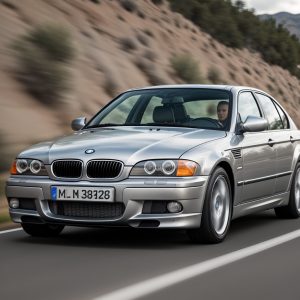Understanding paddle shifters
Paddle shifters are increasingly becoming a common feature in modern BMW vehicles, offering drivers a seamless transition between automatic and manual gear shifting. These sleek and convenient controls, typically mounted behind the steering wheel, allow for a more engaging driving experience. However, many BMW owners may not be fully aware of how to utilize paddle shifters to their fullest potential.
Before delving into the specifics of using paddle shifters in your BMW, it’s essential to understand their functionality. Paddle shifters enable drivers to manually shift gears without the need for a traditional clutch pedal or gear stick. This technology originated in Formula 1 racing cars but has since trickled down to production vehicles, including various models of BMW.
Activating paddle shifters
Activating the paddle shifters in your BMW is a straightforward process. Start by ensuring your vehicle is in the manual or sport mode, as paddle shifters are typically disabled in automatic mode. Once in the appropriate driving mode, simply grasp the paddle behind the steering wheel to upshift or downshift as desired.
It’s worth noting that most BMW models equipped with paddle shifters feature an automatic mode that allows the transmission to function like a traditional automatic gearbox. However, engaging manual mode grants drivers full control over gear selection, enhancing the driving experience, especially in spirited driving scenarios.
Mastering manual gear shifting
Learning to proficiently use paddle shifters in your BMW requires practice and familiarity with manual gear shifting principles. While the process may seem intimidating at first, mastering manual gear shifting can significantly enhance your driving skills and overall enjoyment behind the wheel.
When approaching a corner or needing to accelerate quickly, anticipate the appropriate gear change by downshifting using the paddle shifters. This ensures that your BMW remains in the optimal gear for maximum performance and responsiveness. Similarly, upshifting at the right moment prevents engine lugging and maintains smooth power delivery.
Adapting to driving conditions
One of the key advantages of paddle shifters is their ability to adapt to various driving conditions seamlessly. Whether you’re navigating city streets, cruising on the highway, or tackling winding mountain roads, paddle shifters provide the flexibility to tailor your BMW’s performance to suit the situation.
During inclement weather or slippery road conditions, consider downshifting to a lower gear to improve traction and stability. Conversely, when cruising on the highway, upshifting to a higher gear can enhance fuel efficiency and reduce engine strain, resulting in a smoother and more relaxed driving experience.
Practice makes perfect
Like any skill, mastering the use of paddle shifters in your BMW requires patience, practice, and a willingness to learn. Take the time to familiarize yourself with the layout and operation of the paddle shifters, experimenting with different driving scenarios to gain confidence and proficiency.
Whether you’re a seasoned enthusiast or a novice driver, unlocking the full potential of paddle shifters can elevate your driving experience to new heights. By understanding their functionality, practicing manual gear shifting techniques, and adapting to diverse driving conditions, you’ll harness the true power and performance of your BMW.
In conclusion, paddle shifters represent a significant advancement in automotive technology, offering BMW drivers a dynamic and engaging driving experience. By following the guidelines outlined in this comprehensive guide, you can unlock the full potential of paddle shifters and take your driving skills to the next level. Remember, practice makes perfect, so don’t hesitate to explore the capabilities of paddle shifters in various driving scenarios. Whether you’re navigating city streets or tearing up the track, paddle shifters empower you to command your BMW with precision and finesse.




